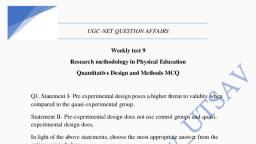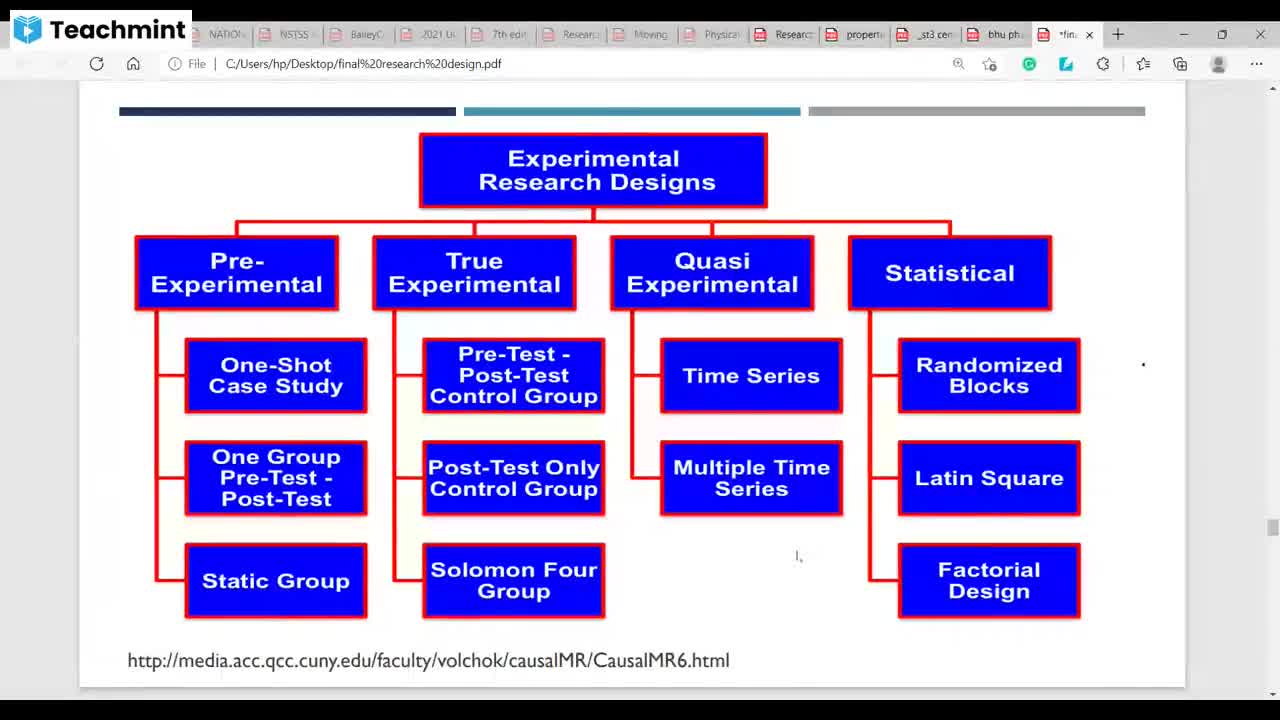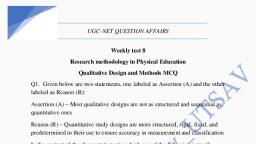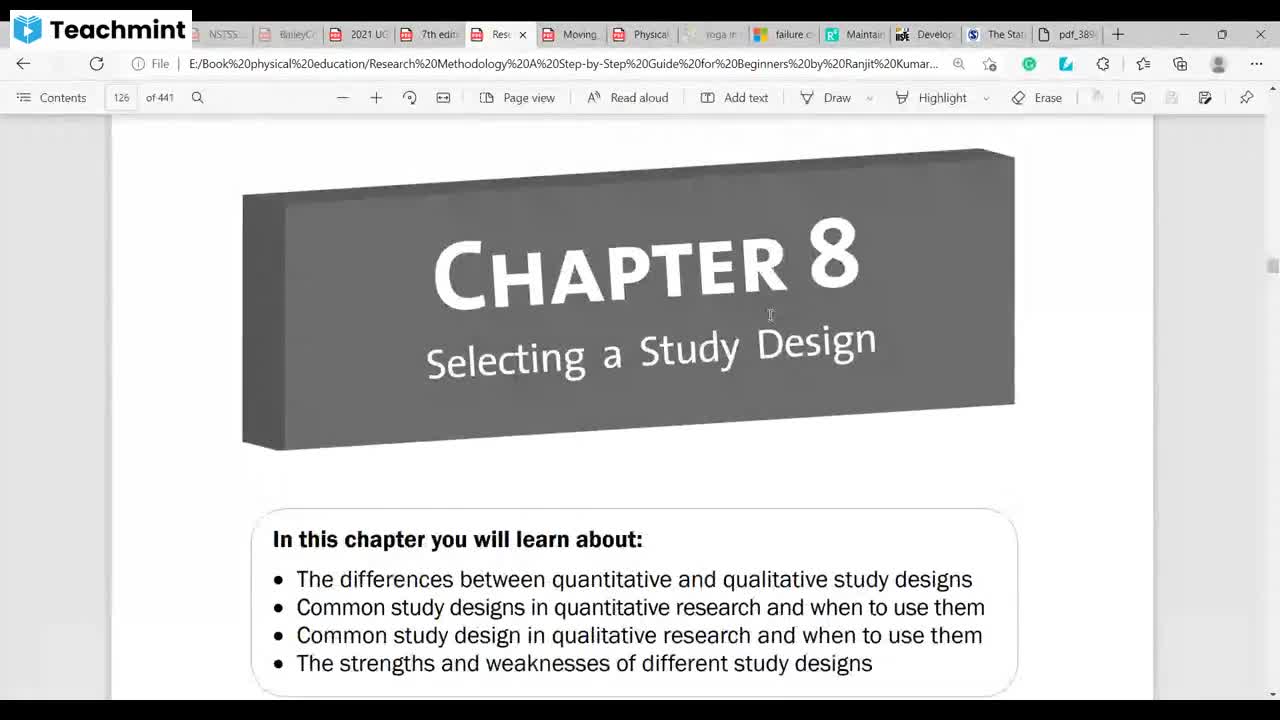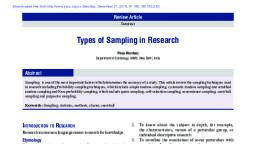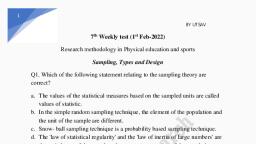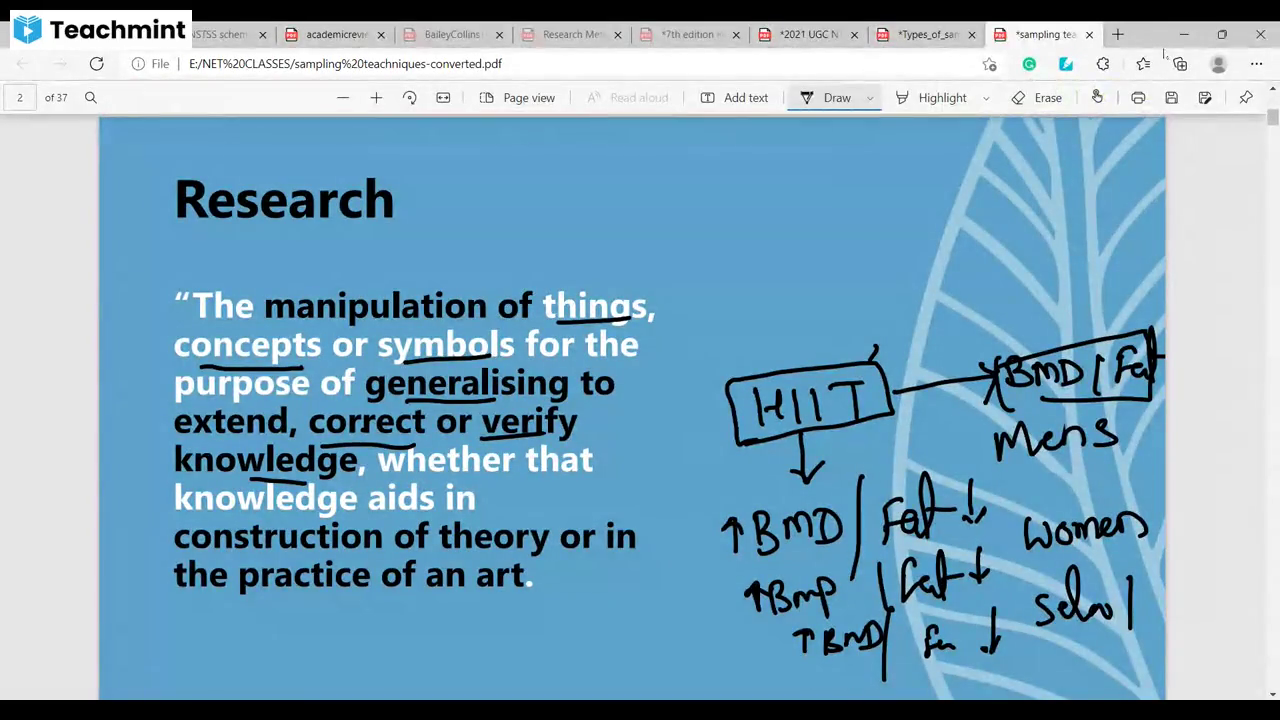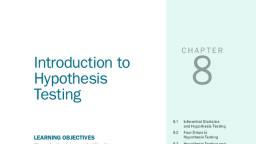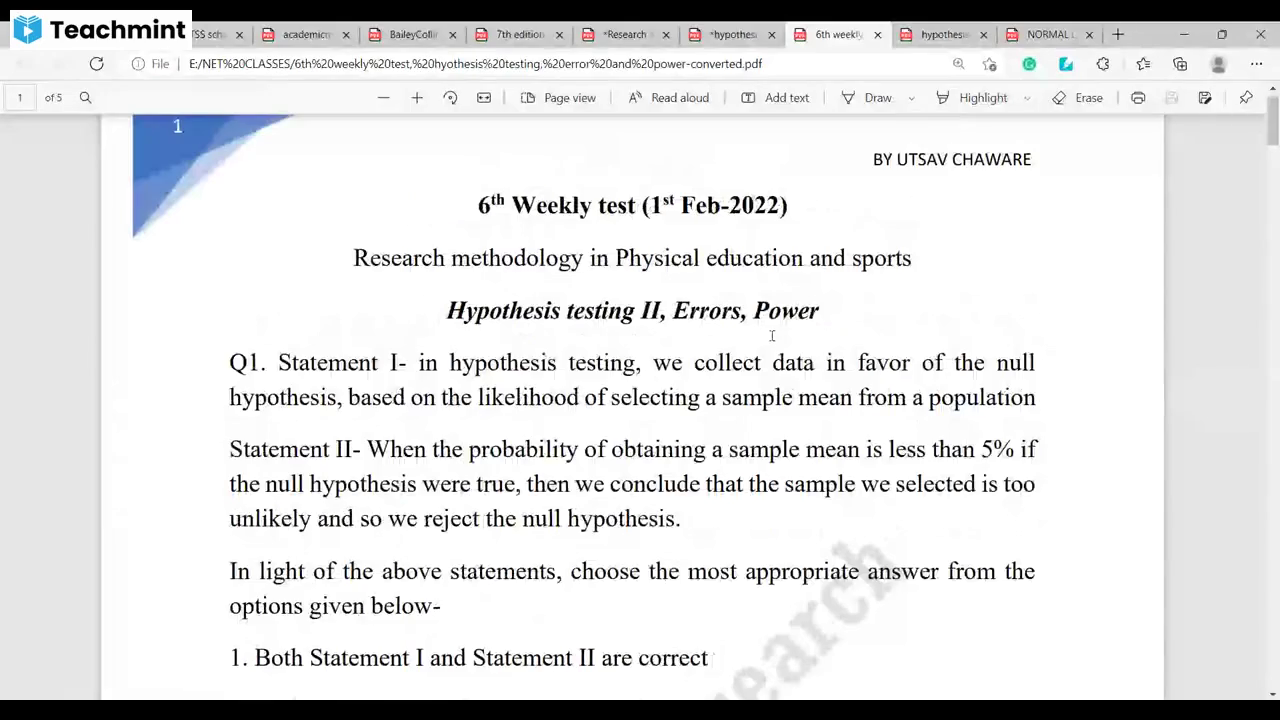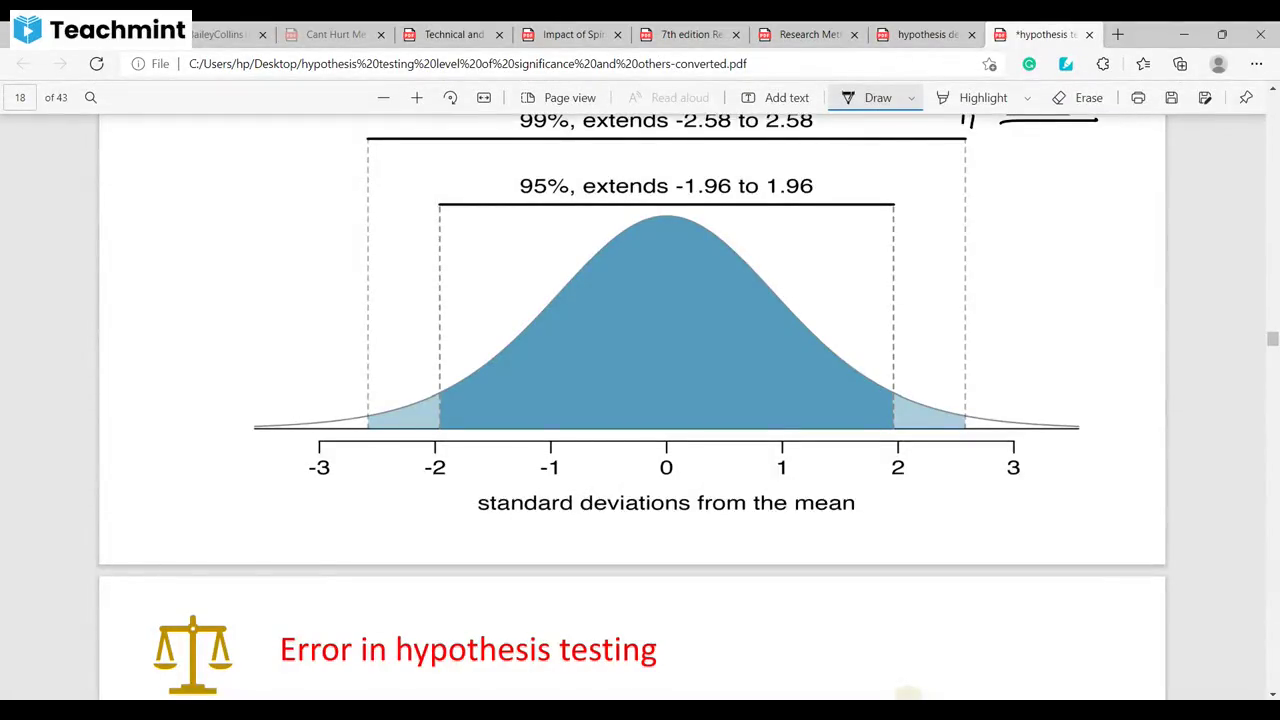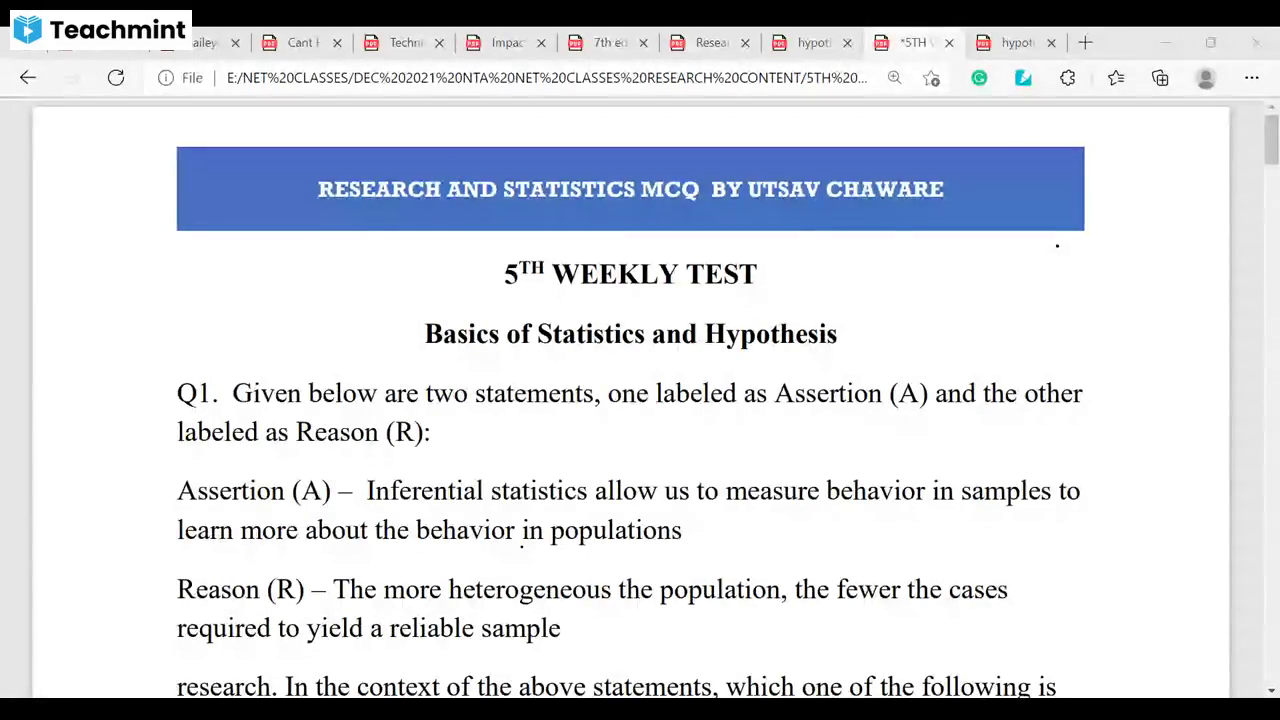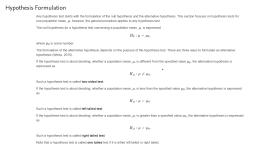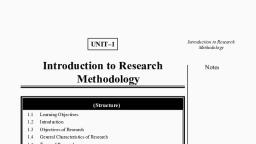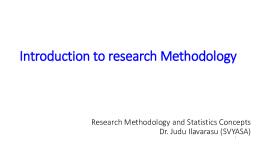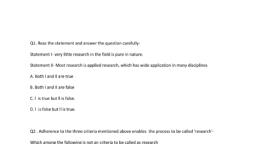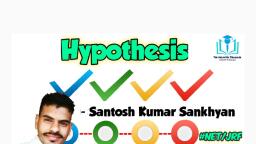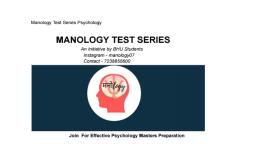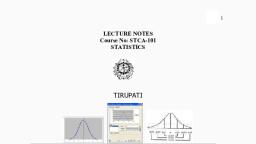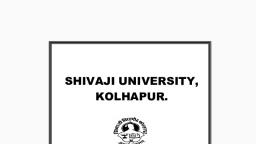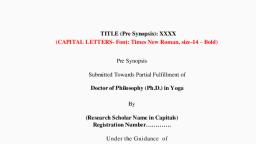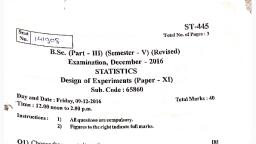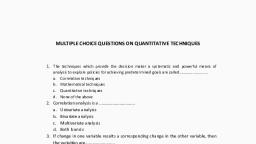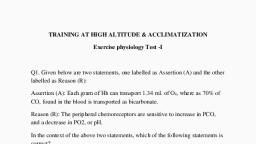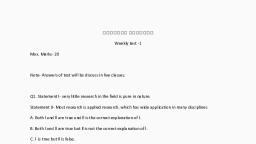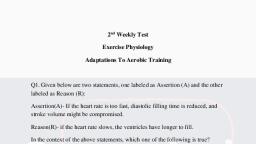Page 1 :
1, , cEFef, BY UTSAV CHAWARE, , 6th Weekly test (1st Feb-2022), Research methodology in Physical education and sports, Hypothesis testing II, Errors, Power, Q1. Statement I- in hypothesis testing, we collect data in favor of the null, hypothesis, based on the likelihood of selecting a sample mean from a population, Statement II- When the probability of obtaining a sample mean is less than 5% if, the null hypothesis were true, then we conclude that the sample we selected is too, unlikely and so we reject the null hypothesis., In light of the above statements, choose the most appropriate answer from the, options given below1. Both Statement I and Statement II are correct, 2. Both Statement I and Statement II are incorrect, 3. Statement I is correct but Statement II is incorrect, 4. Statement I is incorrect but Statement II is correct, , Q2. . Given below are two statements, one labeled as Assertion (A) and the other, labeled as Reason (R):, Assertion (A) – The empirical rule tells us that at least 95% of all sample means, fall within about 2 standard deviations (SD) of the population mean, Reason (R) – There is less than a 5% probability of obtaining a sample mean that, is beyond 2 SD from the population mean., In the context of the above statements, which one of the following is true? Codes:, 1., Both (A) and (R) are true and (R) is the correct explanation of (A)., 2., Both (A) and (R) are true, but (R) is not the correct explanation of (A), 3., (A) is true, but (R) is false., 4., (A) is false, but (R) is true., , 1
Page 2 :
2, , cEFef, BY UTSAV CHAWARE, , Q3. A criterion is set upon which a researcher will decide whether to retain or, reject the value stated for ______1. Test statistics, 2. Null hypothesis, 3. Alternative hypothesis, 4. level of significance, , Q4. Statement I- The sample mean is an unbiased estimator of the population, mean, Statement II- A randomly selected sample on average will have a mean equal to, that in the population, In light of the above statements, choose the most appropriate answer from the, options given below1. Both Statement I and Statement II are correct, 2. Both Statement I and Statement II are incorrect, 3. Statement I is correct but Statement II is incorrect, 4. Statement I is incorrect but Statement II is correct, , Q5. There is always some probability that we decide that the null hypothesis is, false when it is indeed false. This decision is called the ___, 1. Correct decision, 2. Type 2 error, 3. Power, 4. Hypothesis retention, , 2
Page 3 :
3, , cEFef, BY UTSAV CHAWARE, , Q6. Which of the statement is/are incorrecta. to retain a false null hypothesis is power, b. Type I error is more crucial, c. Researcher can set B (beta) before the study, d. (b) error, is the probability of incorrectly retaining the null hypothesis., e. Researcher control Type I error by stating level of significance., Codes, 1. a, b, and d, 2. a, c, and d, , 3. c, d, and e, 4. a and d, , Q7. Match List-I with List-II and select the correct option using the codes given, below:, List-I, , List-II, , a. critical value, , i. criterion for a hypothesis test., , b. level of significance, , ii. estimate from the statistics of the observed data, , c. p-value, , iii. Cut-off value that defines the boundaries, , d. confidence interval, , iv. the level of marginal significance, , codesa, , b, , c, , d, , 1., , iii, , i, , iv, , ii, , b., , iv, , i, , iii, , ii, , c., , iii, , iv, , ii, , i, , d., , i, , ii, , ii, , iv, , 3
Page 4 :
4, , cEFef, BY UTSAV CHAWARE, , Q8. Given below are two statements, one labeled as Assertion (A) and the other, labeled as Reason (R):, Assertion (A) – alpha level is the largest probability of committing a Type I error, that we will allow and still decide to reject the null hypothesis., Reason (R) – The regions beyond the critical values, displayed in, are called the, rejection regions., In the context of the above statements, which one of the following is true? Codes:, 1., Both (A) and (R) are true and (R) is the correct explanation of (A)., 2., Both (A) and (R) are true, but (R) is not the correct explanation of (A), 3., (A) is true, but (R) is false., 4., (A) is false, but (R) is true., , Q9. Which of the following statements are correct regarding POWER, a. probablity of retaining null hypothesis in fact when it is false, b. probability of avoiding a Type II error, c. probability that a test of significance will pick up on an effect that is present., d. more the power more it moves closer to 0, e. increased by more sample size, codes1. b, c, and e, 2. c, e, and a, , 3. b, c, d, and e, 4. b, c, and e, , 4
Page 5 :
5, , cEFef, BY UTSAV CHAWARE, , Q10. Which of the following factors affect powera., b., c., d., , Significance level (or alpha), Sample size, Variability, or variance, Magnitude of the effect of the variable, , Codes1. b, c, and d, 2. b and c, , 3. a, b, and c, 4. a, b, c, and d, , 5





